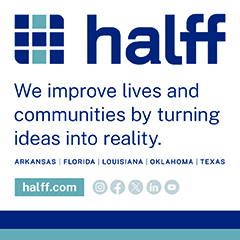The focus on water is extreme in almost every state in America. That’s because there are dozens of water infrastructure projects that simply must be addressed. The most critical issues tend to be water resources, aging water treatment plants, flood control, aging dam structures and leaking water pipelines. These types of projects are usually expensive, but the good news is that there is still federal funding available.
In October 2024, the Environmental Protection Agency (EPA) allocated $3.6 billion for cities, counties and states to upgrade water infrastructure. That allocation brought the total available in fiscal year 2025 to $6.2 billion. However, in January when the Trump Administration took over, a temporary pause was put on federal grants and loans.
Despite this, funding for water infrastructure projects has largely continued, with significant investments being announced prior to the pause. While there have been temporary funding pauses for certain federal programs, the support for water has continued. Today, water projects are launching throughout the U.S., and there appears to be no slowdown in sight.
Officials in the city of Le Mars, Iowa, announced a $155 million wastewater plant expansion project that will allow the plant to meet state environmental regulations. Upgrades to the plant will also allow it to meet projected demand increases in residential and industrial wastewater volume.
Project specifications will include the construction of a new lift station, a new anaerobic pretreatment facility to handle high-strength industrial flows and a large biosolids lagoon. An aging industrial plant slated for demolition will also be decommissioned as part of the project. Currently in the pre-construction phase, construction will likely begin in early 2026 with solicitation documents released in late 2025.
A $75 million creek restoration effort will be launched in San Antonio, Texas, in early 2026. This large project is just one part of a broader Westside Creeks Ecosystem Restoration Program, and its objective is to restore and reconnect several urban waterways across the city. The project will be designed to reverse decades of concrete channelization and enhance stormwater function.
It will also restore habitat and expand public access to the creeks. This restoration will involve removing concrete channel lining, returning the creek channel to a naturalized state and reintroducing native vegetation to support a resilient riparian ecosystem. The work will enhance stormwater management, water quality and biodiversity throughout the 7.3-square-mile Martinez Creek Watershed.
In addition to ecological improvements, the effort will also include developing 222 acres for community amenities that include multi-use trails, shaded seating, drinking fountains and picnic areas. Construction is planned for early 2026, and contracting bids will be solicited in late 2025.
A project carrying an approximate cost of $20 million is being designed in Norman, Oklahoma, to deliver a new groundwater treatment facility that meets regulatory compliance. To the delight of residents, the effort will also improve water quality by eliminating disinfectant residuals and emerging contaminants such as arsenic, chromium and lithium.
The new treatment facility will be located on 28 acres owned by the city, and it will include a centralized process facility with lab space, chemical storage areas, dosing systems for sodium hypochlorite and liquid ammonia sulfate, on-site sewer disposal infrastructure, stormwater detention and rain gardens and paved access roads with fencing. The project is currently in the zoning and platting phase. Final design and contractor procurement will follow, with construction slated for 2026.
Officials at Traverse City, Michigan, are planning a $41 million project to upgrade a wastewater treatment facility that has deteriorating infrastructure issues. The existing plant, originally built in 1932, currently serves approximately 15,000 city residents, 30,000 township residents and numerous local industries. Many systems inside the current plant are far past their intended service life, and the facility can no longer meet performance or regulatory standards without the planned upgrades.
The preliminary screening area will be upgraded with new equipment to improve debris removal and flow efficiency. Advanced grit removal technology will be installed, and corroded primary clarifiers will be replaced. New primary effluent screw pumps will be replaced, and the UV disinfection system will be rebuilt and elevated to withstand high water conditions. The project is in its final design phase, and construction is planned for late 2025.
The Crater Lake National Park in Oregon is about to undergo an extensive $50.8 million trail and marina rehabilitation upgrade project to address infrastructure concerns and environmental risks. The Cleetwood Cove Trail, which is the only authorized public access point to Crater Lake’s shoreline, has deteriorated significantly and is badly in need of attention. It has suffered trail tread loss and damage to its retaining walls. Rockfall hazards have become dangerous, and the overall marina infrastructure has become a safety risk.
The project will call for comprehensive upgrades and rehabilitation of the 1.1-mile trail. The work will also include rockfall mitigation along high-risk slopes and the removal and replacement of a failed bulkhead and dock system. A new floating marina will be constructed, and new public restroom facilities will be added, along with a new ticket booth at the lake’s edge.
The rehabilitation will address both visitor safety and long-term sustainability of the park’s most trafficked corridor. With more than 50,000 hikers annually, the trail must withstand intense seasonal use. The project is currently in the final design and compliance phase. Construction is slated for early summer 2026, and a contractor will be selected in late 2025.
Water resources are critical components of America’s vitality, livability and global competitiveness. Large, complex projects like these, which are currently in the planning stages, will call for numerous types of private sector expertise along with new technology, equipment and land work.
Image/Photo Courtesy Canva













